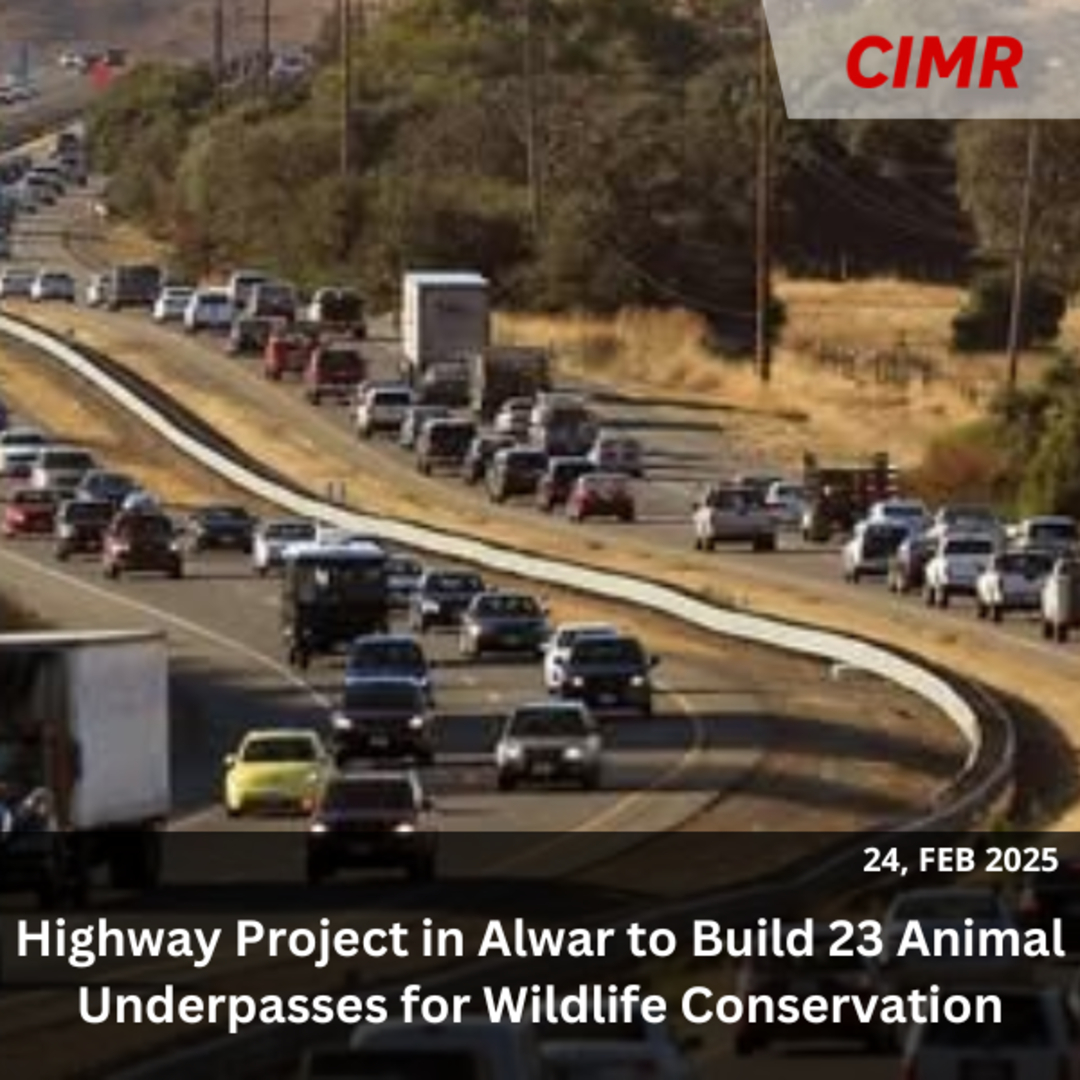NHAI plans 86-km highway between Paniyala Mod and Barodamev with 23 animal underpasses for wildlife, improving connectivity from Rajasthan to Chandigarh and linking to Delhi-Mumbai Expressway.
A major highway project in Alwar, Rajasthan, is set to incorporate 23 animal underpasses, marking a significant step towards wildlife conservation and sustainable infrastructure development. This initiative is designed to mitigate roadkill incidents and ensure the safe passage of animals across the highway, particularly in regions close to protected forest areas and wildlife corridors.
A Balance Between Development and Ecology
As infrastructure development expands across India, concerns over its impact on biodiversity and wildlife habitats have grown. The Alwar highway project, part of a broader effort to improve connectivity in Rajasthan, runs through areas that serve as natural habitats for various species, including leopards, hyenas, deer, and other wildlife.
To address these concerns, the project developers, in collaboration with environmental experts and wildlife conservationists, have integrated 23 dedicated animal underpasses into the highway’s design. These underpasses will provide safe transit routes for wildlife, reducing the risk of animal-vehicle collisions and preserving the ecological balance of the region.
Key Features of the Animal Underpasses
The underpasses are designed using scientific studies on animal movement patterns to ensure maximum effectiveness. Some key features include:
- Varying Sizes for Different Species – The underpasses will be of different dimensions, catering to both small and large animals, ensuring usability by a wide range of wildlife.
- Natural Landscaping & Green Corridors – To encourage animals to use the passages, these underpasses will be lined with vegetation, natural soil, and water sources, making them similar to their natural habitat.
- Fencing & Guidance Mechanisms – Special fencing and barriers will be installed along the highway to direct animals towards the underpasses, preventing them from crossing roads directly.
- Monitoring & Adaptation – The effectiveness of the underpasses will be assessed through camera traps and tracking systems, allowing for improvements based on wildlife movement patterns.
A Model for Future Infrastructure Projects
The implementation of these animal underpasses in Alwar sets an important precedent for other infrastructure projects in India. With increasing human-wildlife conflicts due to habitat fragmentation, such initiatives demonstrate how modern engineering can integrate environmental sustainability.
Similar projects have been successfully implemented in other parts of India, including Ranthambore, Kanha-Pench, and the Western Ghats, where underpasses and overpasses have significantly reduced roadkill incidents and facilitated safe animal movement.
Conservationists Applaud the Initiative
Wildlife conservationists and environmental experts have welcomed the move, emphasizing the importance of considering animal movement corridors in infrastructure planning.
According to [Expert Name], [Designation], “This project is a step in the right direction. Highways are often barriers that disrupt natural ecosystems, but initiatives like these underpasses show that development and conservation can go hand in hand.
Group Media Publication
Construction, Infrastructure and Mining
General News Platforms – IHTLive.com
Entertainment News Platforms – https://anyflix.in/
Legal and Laws News Platforms – https://legalmatters.in/
Podcast Platforms – https://anyfm.in/





